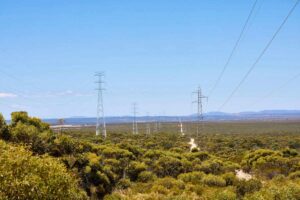The CSIRO is to lead a major new research initiative in solar thermal (concentrating solar power, or CSP) technologies that will aim to reduce the cost of the technology to between 9c and 12c a kilowatt hour, and be able to compete with fossil fuels – possibly as early as 2016.
The Australian Solar Thermal Research Initiative (ASTRI) was unveiled today, delivering $35 million of funding from the Australian Solar Institute and the Australian Renewable Energy Agency, as part of an $87 million research program that will also draw on money from the private sector. The program brings together Australian and US research institutions, with United States research collaborators and with leading international and Australian CSP companies.
“ASTRI will deliver the next wave of CSP cost reductions to deliver solar electricity at between 9 -12 cents per kWh, and maintain the option of a large CSP industry for Australia,” it said in a statement. “This will allow CSP to compete with fossil fuels in target initial applications by 2016.”
Sarah Miller, who is leading the project, said the ASTRI initiative is designed to ensure that “Australia’s CSP industry and Government partners are ideally positioned to drive Australia to the forefront of the global CSP industry.”
That’s a welcome ambition, particularly because Australia seems at risk of falling behind the rest of the world in the deployment of CSP.
As we wrote earlier this week, the Gulf states are investing tens of billions into solar thermal over the next decade in an ambitious deployment that will allow them to replace peteroleum products that can be sold into the more lucrative international market.
China has also announced a 3GW target by 2015 for CSP, and South Africa and India are also active in the area, with a series of open tenders designed to help meet their renewable energy targets.
In Australia, however, little has been built in CSP, apart from a couple of smaller solar booster projects at the Liddell coal plant and a larger 44MW booster project soon to be completed at the Kogan Creek coal plant in Queensland.
The solar flagships proposal to build a 250MW plant in south-west Queensland fell by the wayside, and the only “live” project is the potential to replace, or at least augment, coal fired generation at Port August.
CSP is regarded as expensive technology, and the CSIRO release suggests it is still around 25c/kWh. But the International Renewable Energy Agency said last week that the technology in the best solar areas was already at $140-$180/MWH (14c-18c/kWh), a position where it could compete with peaking gas plants.
Most CSP technology developers see their costs at around $100/MWh by the end of the decade, and the technology is seen as crucial because it can combine easily with storage and can deliver “dispatch able energy” on demand, which is critical in an energy system dominated by intermittent wind and solar.
CSIRO’s university partners for the solar thermal research initiative include the Australian National University, University of Queensland, The University of Adelaide, The University of South Australia, Queensland University of Technology and Flinders University. Overseas partners include the US Department of Energy’s National Renewable Energy Laboratory (NREL), Sandia Corp and Arizona State University.






